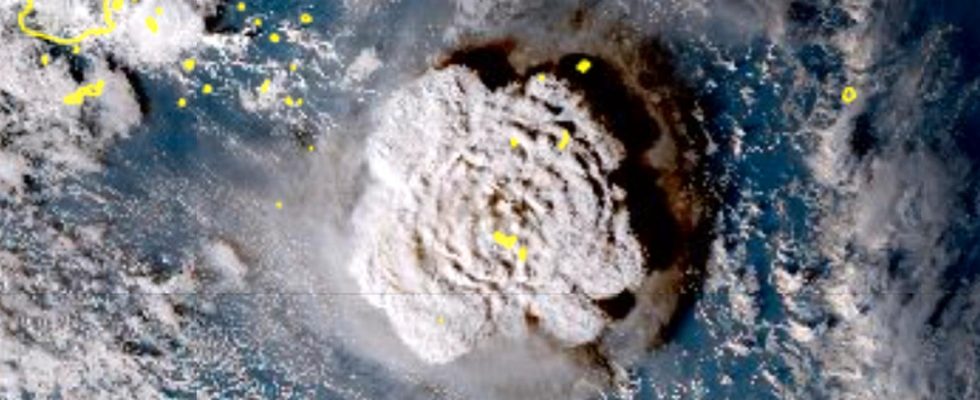full screen
Next
Japanese weather satellite Himawari-8 shows the Hunga Tonga-Hunga Ha’apai volcano erupting.
1 of 2 Photo: TT/AP
The underwater volcanic eruption off Tonga last year created a super plasma bubble.
The bubble was so powerful that it disrupted GPS systems for several hours.
The powerful volcanic eruption in the sea off Tonga in January 2022 shocked the small island nation in the Pacific Ocean and spewed matter as much as 57 kilometers into the air.
And now space scientists together with RMIT University in Melbourne, Australia have discovered that the eruption was so powerful that it created a super plasma bubble that disrupted the gps satellite navigation system over northern Australia for several hours.
When the researchers measured the plasma bubble from the Hunga Tonga-Hunga Ha’apai underwater volcano, they calculated that it may have disrupted navigation systems as far south as Townsville for about five hours.
The plasma bubble is the largest ever measured over Australia.
Used in agriculture
The type of GPS affected by the outbreak is mainly used in agriculture, mining and the construction sector and those who tried to use GPS and did not already have contact with satellites had to wait a long time.
How well and accurately GPS works depends largely on layers of charged particles or plasma in the atmosphere called the ionosphere.
The ionosphere starts about 80 kilometers above our heads and extends more than 800 kilometers to the edge of space.
Navigational satellites, such as those in the GPS constellation, transmit radio signals through the ionosphere to receivers below.
Turbulence in the ionosphere
But the ionosphere is far from calm. There are strong winds and waves. Bubbles travel through the plasma and change its density, and when that happens, radio signals passing through the plasma from the satellites are sometimes disrupted, and the signals can also be blocked altogether.
Some waves and bubbles are produced by “space weather”, such as geomagnetic storms, where massive clumps of plasma are ejected from the Sun.
Still others are produced by phenomena below the ionosphere, such as earthquakes, thunderstorms and volcanic eruptions – like the one off Tonga.
The eruption from Hunga Tonga-Hunga Ha’apai was so powerful that it set off a wave in the ionosphere that circled the Earth four times and affected GPS signals in different parts of the world for several days.
It also created a giant bubble that was detected over Southeast Asia and was carried by the Earth’s magnetic field to the north and south, something that was perhaps further exacerbated because a geomagnetic storm, sleep, was detected just before the eruption.
“The generation of plasma bubbles depends on a lot of different things. It’s quite a complicated event,” University of Newcastle space physicist Colin Waters told ABC News.
Exactly how big an impact the volcano had on the plasma bubble will take time to find out, according to the researchers. The study has been published in the journal Space Weather.
FACTS
The GPS system
About 30 satellites in the GPS constellation orbit the planet 20,000 km above, each completing two orbits of Earth in one day. Each satellite sends radio signals to Earth with information about its position and time, and GPS receivers combine signals from multiple satellites in a process called trilateration to calculate its position on Earth.
Local global satellite navigation systems use geosynchronous satellites, which are in a fixed position above a specific location and can provide accurate positional information, even among tall buildings.
Source: ABC News
Read more
